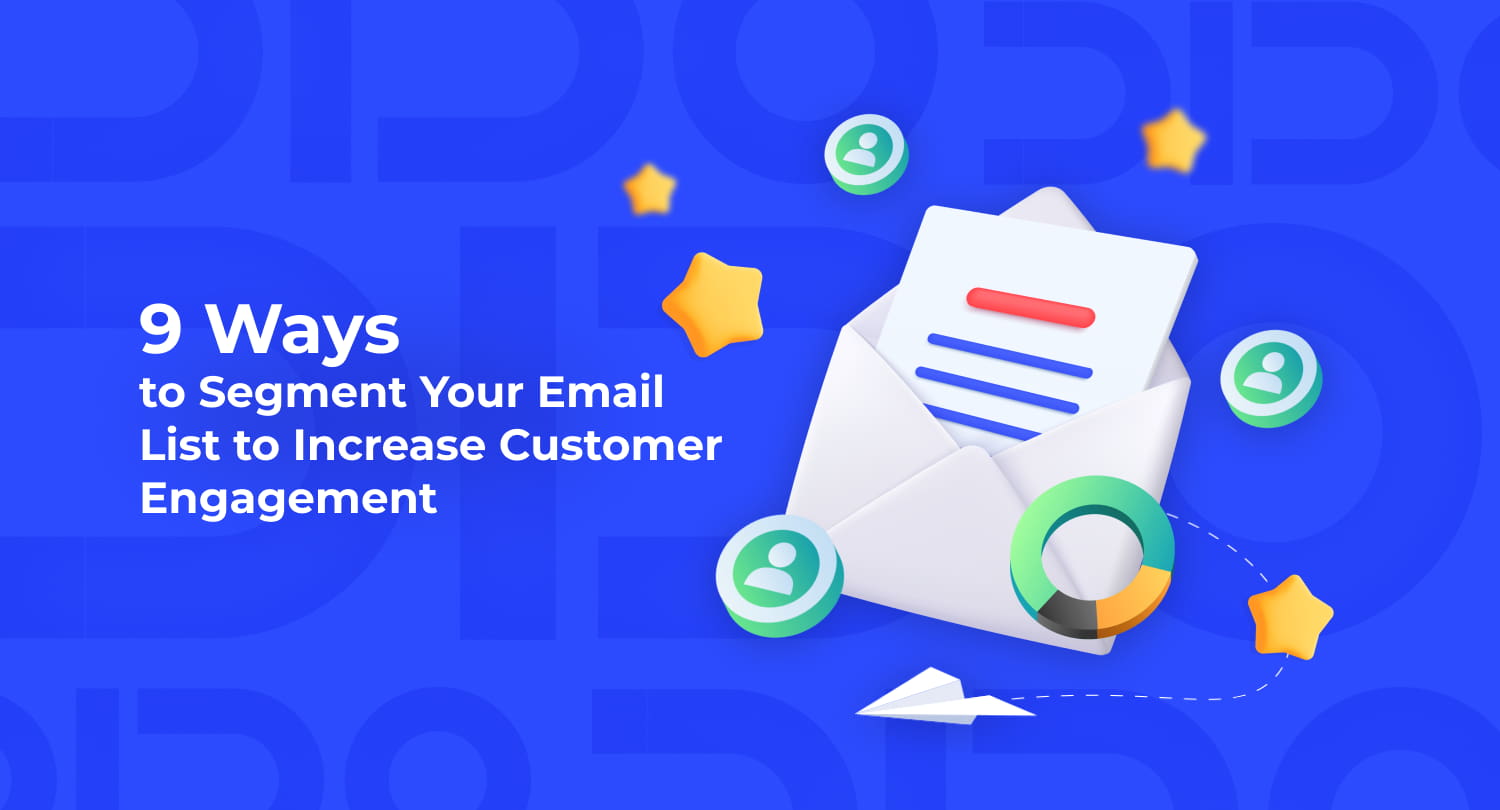Imagine you’re telling a story to 10 people. You know each of them by name, you can gauge their reactions, and you can tailor what you’re saying so it resonates with them. But appealing to a wide audience is harder. The bigger your audience gets, the more difficult it becomes to keep track of what each person wants to hear. You can keep telling your story, but if half your audience realizes it isn’t relevant to them, they’ll tune out. The same goes for email marketing. Competing for attention in an inbox is hard, so it’s essential to be as relevant to your target audience as possible. As you grow your email list, your subscribers will show you what kinds of messages they want from you. That’s where email segmentation can help.
Email segments are groups of subscribers defined by a set of conditions, like location or how recently they’ve clicked on an email. By segmenting your emails, you can create more personalized content that’s more likely to resonate with your target audience.
Ready to craft a segmentation strategy that engages your subscribers? Here are nine effective ways to segment your email list.
1. Product Interests
2. Type of Email
3. Frequency
4. Location
5. Gender
6. Website Interaction
7. Email Engagement
8. Purchase Quantity and Value
9. Customer Satisfaction
Examples of email segments based on your subscribers’ preferences
1. Product interests
If you have several primary or popular product categories, consider letting your subscribers choose which categories of emails they’ll receive.
If you sell both bicycles and scooters, for example, your subscribers may only be interested in bicycles. So why send them information about the launch of your latest scooter?
Rather, create a segment for people who only want emails about bikes and related products (like lights, bells, and baskets), and a separate segment for scooters and related products. Then, create a third segment that wants to hear about both categories of products.
2. Type of email
If you send multiple types of emails — like sales, newsletters, and new product launches — let your subscribers tell you what they want to receive. Some may only be interested in sales, while others may prefer to hear only about new products.
If they’d like to receive multiple emails, you can create combination segments, like “Sales and New Product Releases” or “New Product Releases and Blog Updates.”
3. Frequency
If you send daily emails, you risk overwhelming your subscribers. To avoid this, let subscribers adjust their preferences to tell you how often they want to hear from you.
Prompt subscribers to choose their preferred frequency right when they sign up and include a link at the bottom of your emails to a form that will enable them to update their email preferences.
Examples of email segments based on subscriber data
4. Location
If you have brick-and mortar-stores, creating segments based on location can be useful when you want to notify subscribers about local events and promotions.
Plus, location-based segments can help you share area-specific information like regional shipping restrictions. Maybe you can only offer free shipping to customers in certain areas. If that’s the case, communicate that offer only to people in those areas.
5. Gender
If you see a subscriber is more likely to be interested in certain products — like women and the women’s sweaters you sell — consider segmenting your subscribers by gender.
Keep in mind, though, that gender-based segmentation might not apply to your product, or you might inadvertently limit people who are interested in a variety of products.
A popular UK razor brand, Wilkinson Sword, leaves it up to the customer to decide what gender segment is most relevant to them: The brand asks people when they subscribe to select if they want to hear about razors for men, women, or both.
Plus, their signup form conversions stayed strong when they added this question to their signup form and their segmented welcome series has a 39% conversion rate.

Examples of email segmentations based on customer behavior
6. Website Interaction
If you have web tracking set up on your site, you can segment based on if a subscriber has been active or not. If someone takes a particular action on your website — like adding something to their cart but not checking out — you can also set up automated emails that trigger based on how people interact with your website.
Here are two common website actions you can use as the basis for a segment:
■ People who browse but don’t add anything to their cart → Browse abandonment series.
■ People who add something to their cart but don’t check out → Cart abandonment series.
7. Email Engagement
Creating segments based on how frequently subscribers open your emails helps you prioritize who gets what message.
Highly engaged audiences are more likely to want regular communication, while less engaged audiences probably need a very high-value message, like a sale, to inspire action
Here are three common engagement-based email segments based:
■ 30-day engaged: subscribers who have opened OR clicked on an email at least once in the last 30 days.
■ 60-day engaged: subscribers who have opened OR clicked on an email at least once in the last 60 days.
■ Unengaged: subscribers who have not opened OR clicked on an email ever.
8. Purchase Quantity and Value
Segments based on how often a customer purchases and how much they’ve spent allow you to identify your VIP customers and reward them for their loyalty.
What’s more, they allow you to target subscribers who have never bought from you and offer them incentives to make their first purchase.
Here are some ways you can create segments based on purchase history:
■ VIP customers: customers who have spent over X amount of money overall.
■ Frequent customers: customers who have purchased X amount of times in the past Y months.
■ Big spenders: customers who have an average order value (AOV) of X.
■ Never bought: subscribers who haven’t made a purchase (yet).
9. Customer Satisfaction
By creating segments for both positive and negative customer reviews, you can show your customers that you care about their experience.
Customers who have left a positive review (four or five stars) already have a good impression of your brand and they may even tell a friend about your brand. That means you can target them with positive messages and even a referral code they can share with friends.
People who left a negative review (three stars or fewer) are more likely to respond to more somber or apologetic messaging — perhaps even an attempt to make their experience better with a coupon or phone number to contact customer support.
How will you segment your next email?
Narrowing the audience for your automated emails and one-off campaigns can be a bit scary — what if you exclude someone who would’ve made a purchase?
But the more you experiment with segmentation, the more you’ll find that creating targeted content for a specific audience actually increases your email engagement and revenue.
